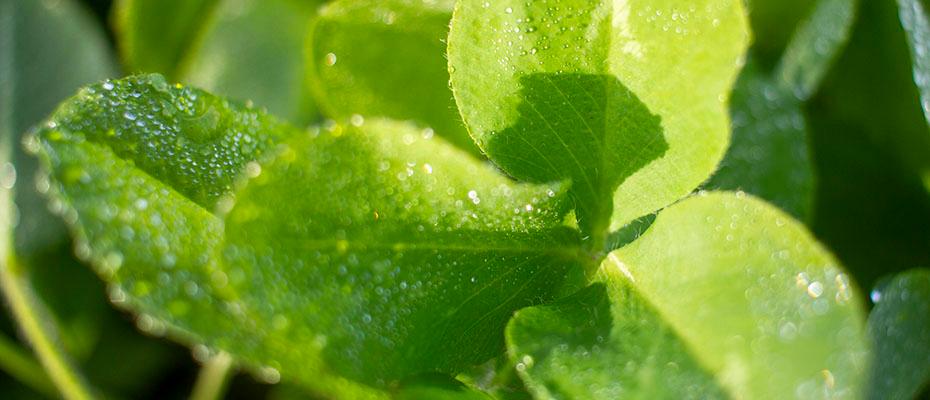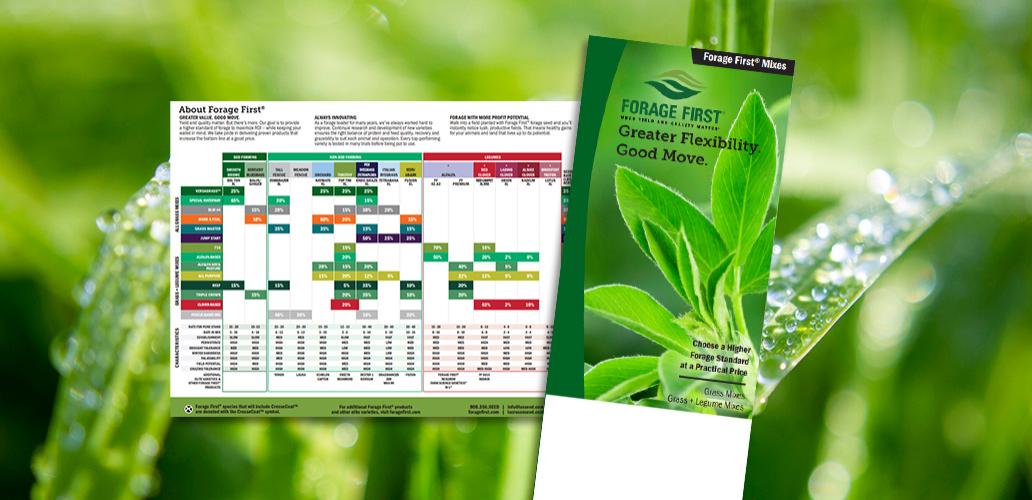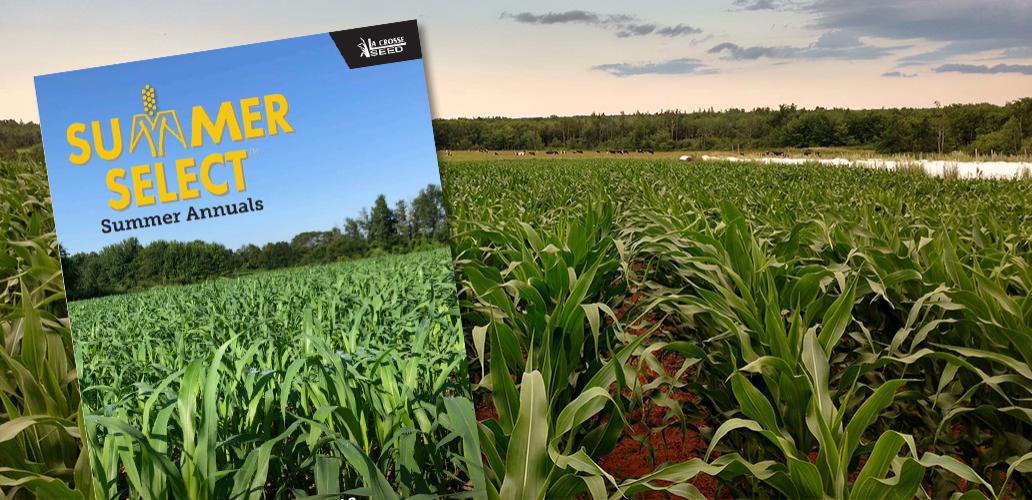Forage First Guide I Summer Select Guide
Greater Value. Good Move. Yield and quality matter. But there’s more. Our goal is to provide a higher standard for forage to maximize ROI– while keeping your wallet in mind. We take pride in delivering proven products that increase the bottom line at a good price.

Duration Red Clover was developed to have excellent winter hardiness, high yields and disease resistance, combined with strong spring green-up and fast recovery after each cutting.
CHARACTERISTICS:
Establishment: Fast
Persistence: Low
Drought Tolerance: Medium Low
Winter Hardiness: Medium High
Palatability: Medium
Yield Potential: High
Grazing Tolerance: Medium
SEEDING:
Seeding Rate:
Alone (lbs./acre): 8-12
Mixes (lbs./acre): 4-8
Seeds/lb.: 272,000
Depth (In.): 1/4-1/2
Planting Time:
Feb.-May; Aug.-Oct.
Emergence (days): 7
Life Cycle: Perennial
Adaptation:
Red clover grows best on well-drained loamy soils, but also grows on soil that not as well-drained. Medium and fine textured soils are preferred over sandy or gravelly soils. It is best adapted to a pH of 6.0 or higher.
Establishment:
Red clover may be seeded in pure stands, but is often mixed with grain or grass. Spring or late summer seedings are satisfactory. It may be overseeded in spring or fall. Red clover seed should be inoculated. Phosphorus and potash are the fertilizer elements needed most by red clover. Apply as recommended by soil tests.
Seeding may be done with drill or broadcast. A firm, weed-free seedbed is essential. For renovating pastures, the recommended seeding rate is 8 lbs./acre.
MANAGEMENT:
Graze or cut for hay when red clover is 1/4-1/2 in. bloom. A second cutting or successive grazings should occur when red clover is 1/4 in. bloom. Leave at least 2-3 in. of growth after each harvest. Care should be taken to eliminate or reduce bloating of livestock when grazing. Keep lime and fertilizers (phosphorus and potash) at proper level.
- High yield potential & excellent winter hardiness
- Resistance to northern/southern anthracnose & powdery mildew
- Great for the Midwest & Northeast Regions

.png)
.png)


.png)










